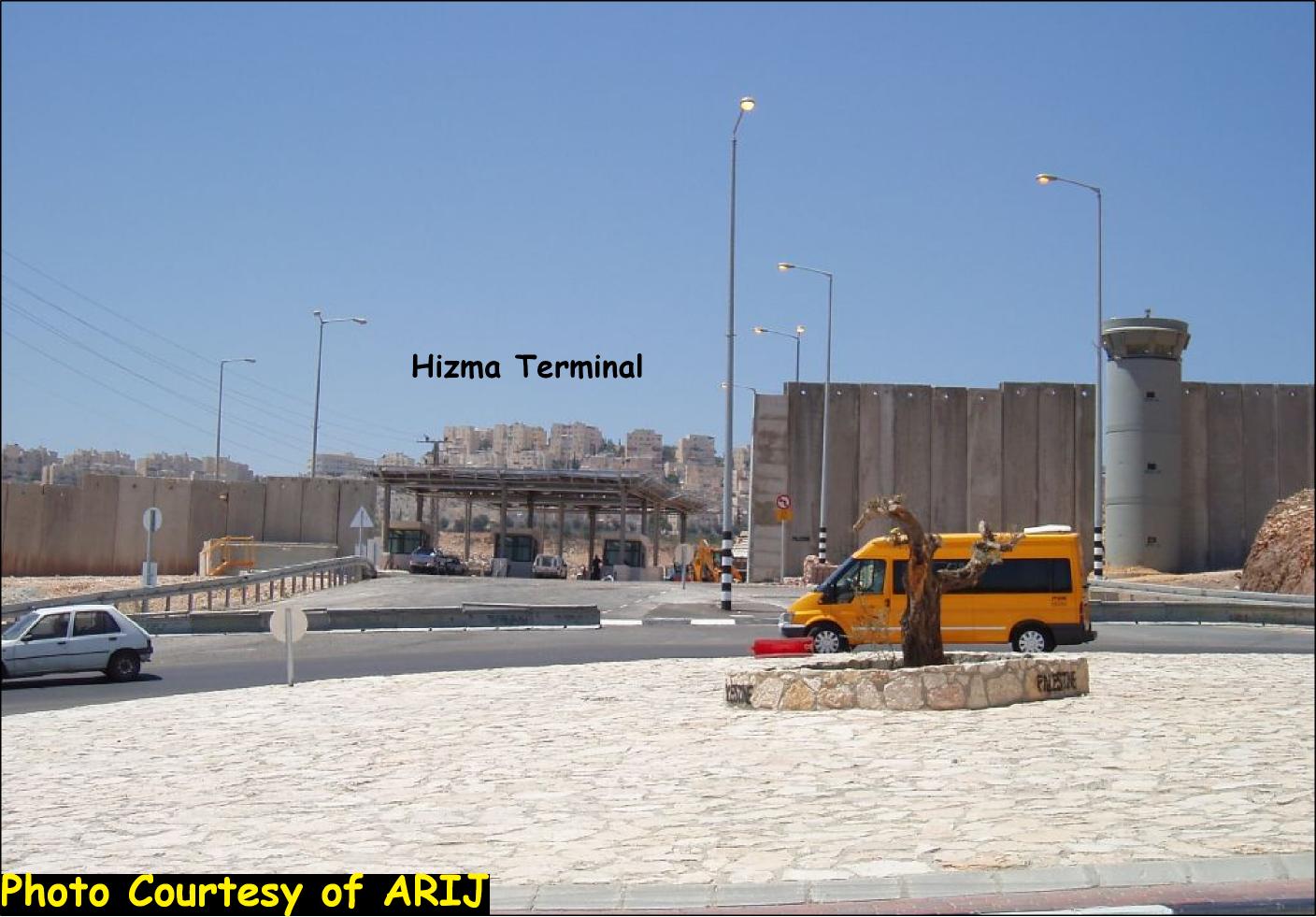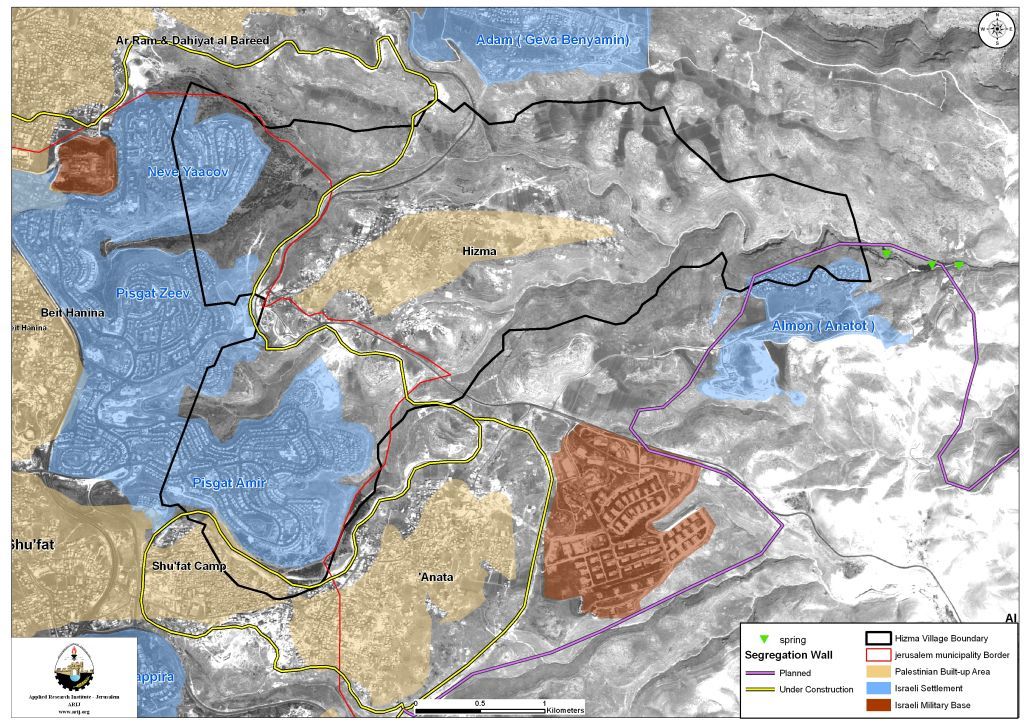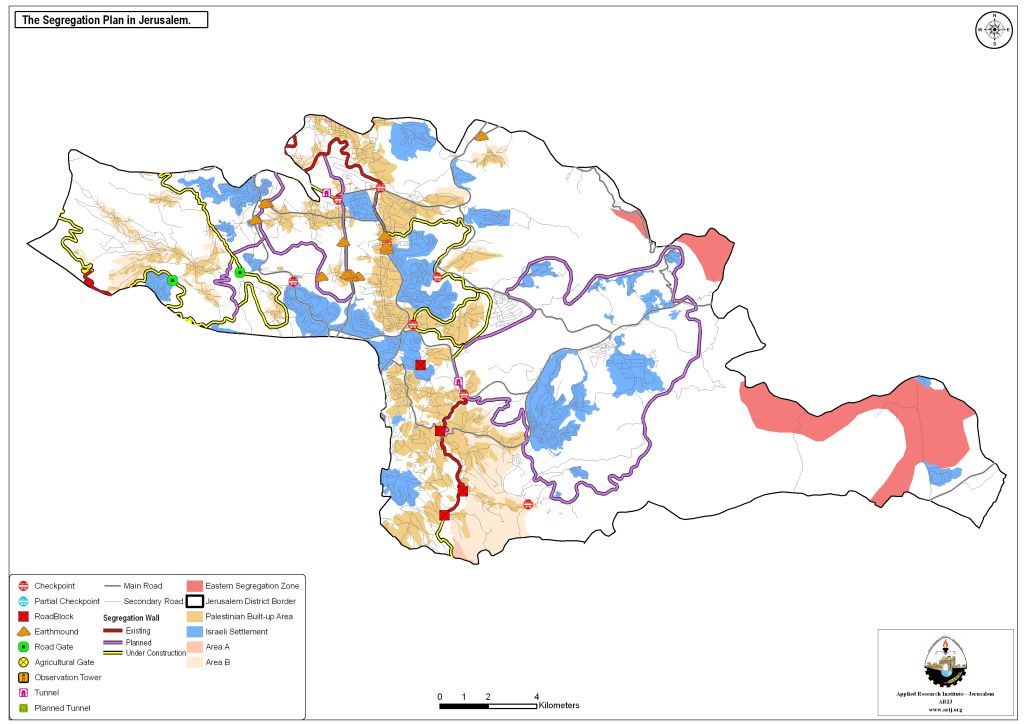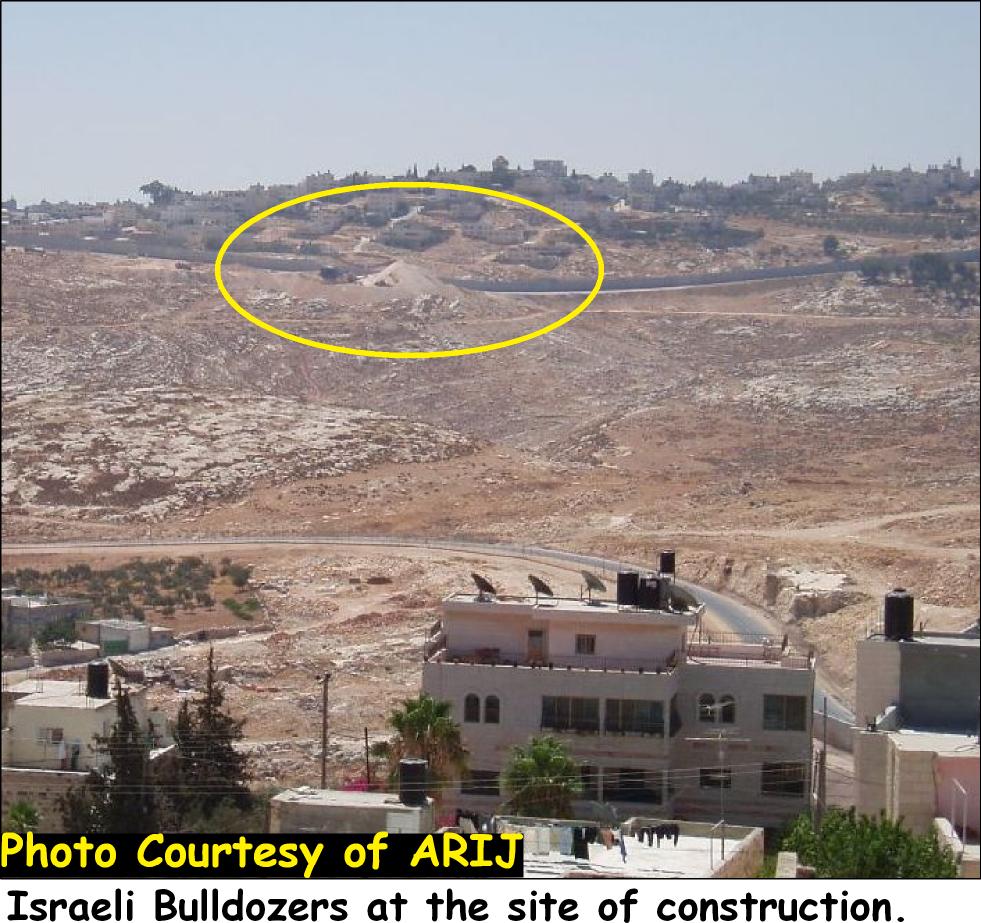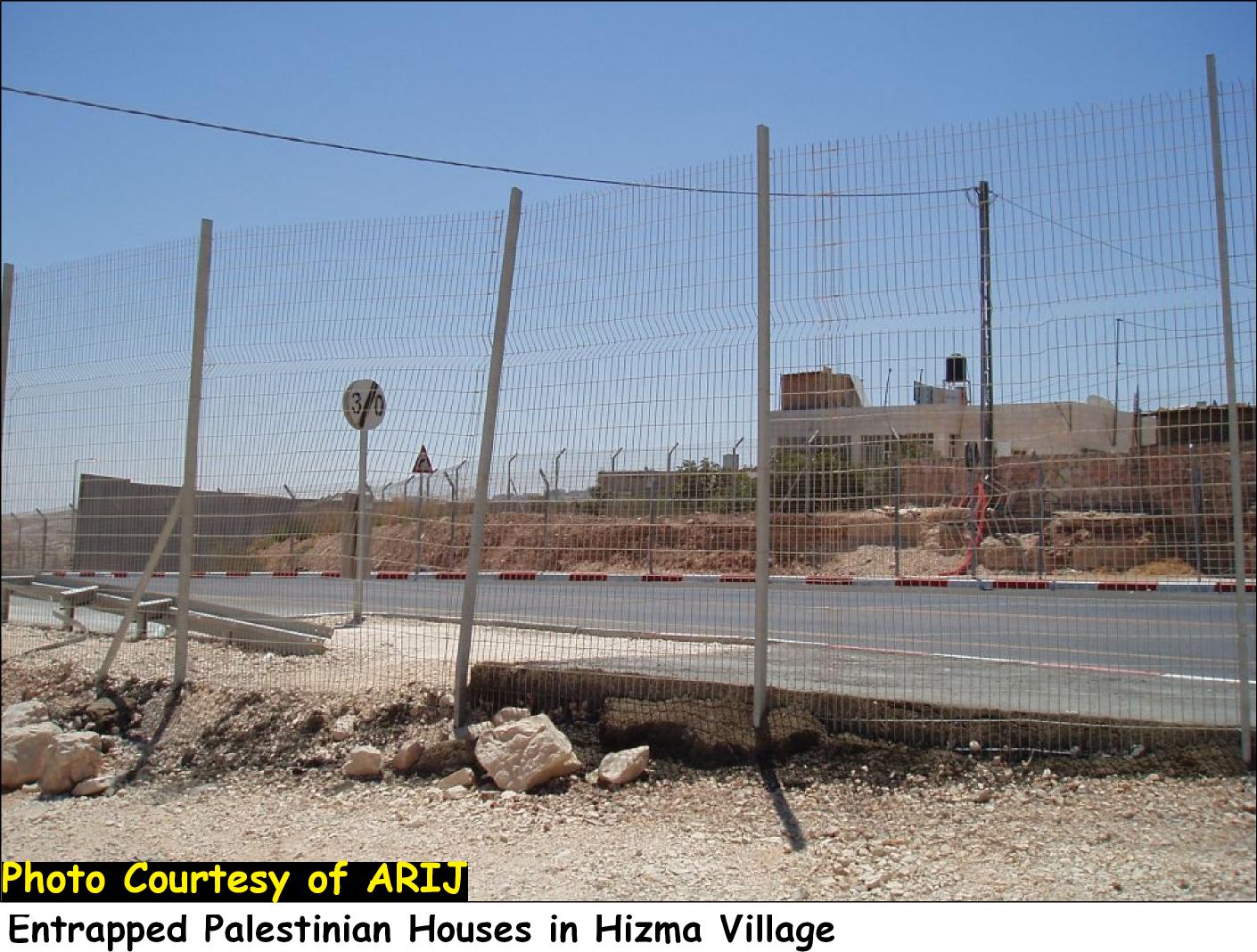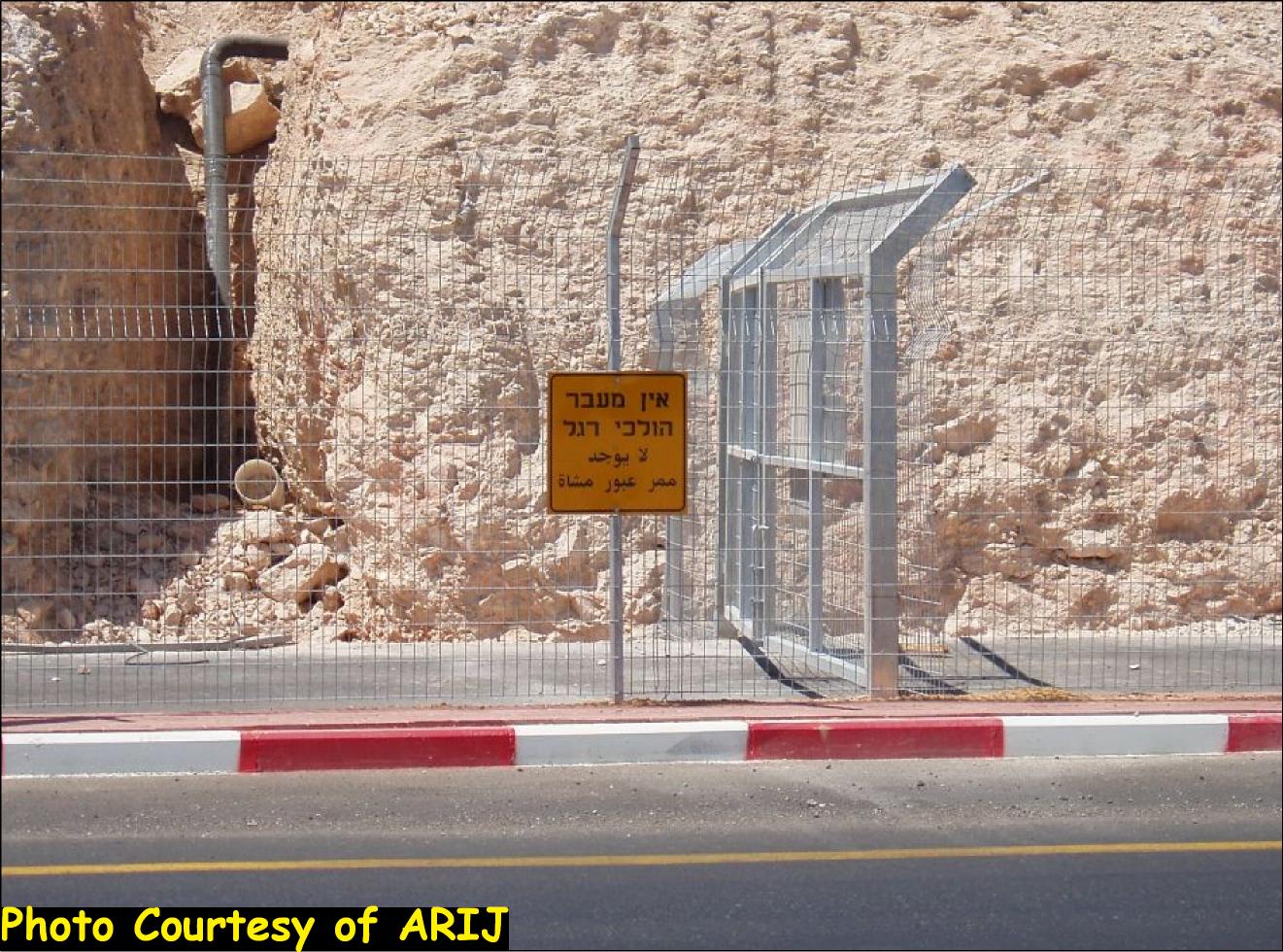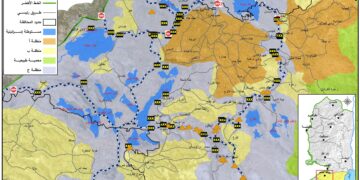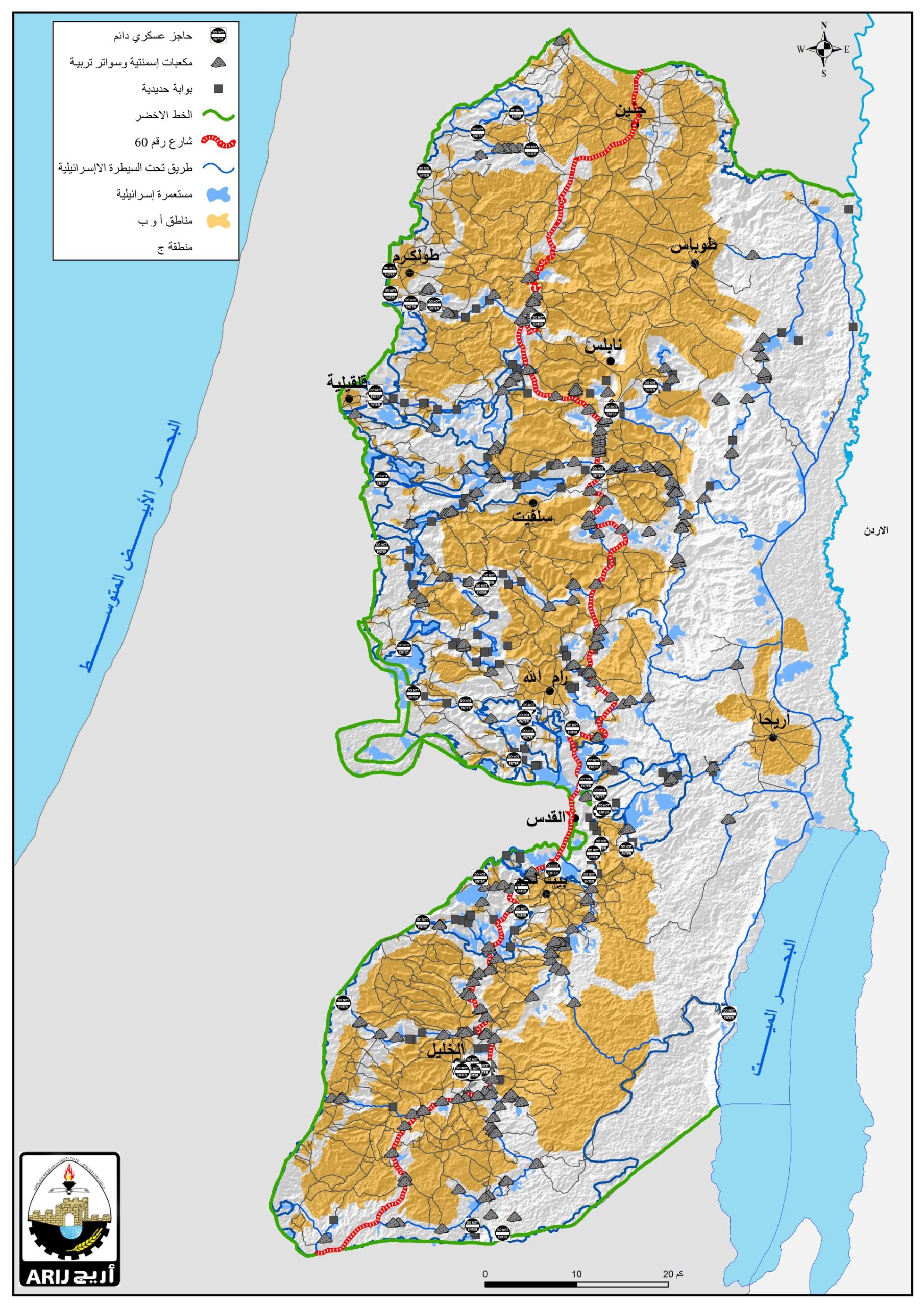Residents Hizma village recently discovered that the checkpoint that separates them from Jerusalem would is to be transformed into a full 'terminal', something which the Israeli government says makes Palestinian crossing easier but in reality greatly slows and restricts the movement of people. The new terminal will make it impossible for anyone who does not have an Israeli permit to enter Jerusalem, the mother city and economic partner of Hizma. This change will therefore have a massive impact on the people of Hizma in numerous ways.
Normally, when the Israeli Army imposes such an alteration upon Palestinian territory, a military order which highlights of the changes made is presented to the Palestinian residents in the affected communities. . This is not always courteously delivered (often the residents of a village find the decree pinned to a tree in a field), but on this occasion no order was officially announced at all. The residents of Hizma became aware of their fate when one of the members of the village council read about the plans for several new terminals in the Al-Quds (Jerusalem) newspaper. See Map 1
Map 1: Terminals around Jerusalem
This small Jerusalem suburb is already completely isolated from the rest of the city by a section of the Segregation that cuts through 6kms of village lands. Today, the only opening in 'the ' is a 4 meters wide â??gateâ??, which is blocked by a military checkpoint. Residents who wish to pass through the checkpoint into Jerusalem must acquire a permit from the Israeli ministry of interior, unless they are holders of Israeli identity cards, which allow them to pass the gate. This has created extremely high unemployment in the village, as these permits are not easy, if not impossible to attain. Given that most of Hizma's economic life is directly connected to Jerusalem, this result is not surprising. See Photo 1
The new terminal will make matters significantly worse. The established culture at checkpoints is one of arbitrary authority. Ultimately, access through a checkpoint is either granted or denied by the solider on duty at that specific moment. There are numerous recorded incidents of people being refused passage through a checkpoint who manage to pass through hours later by waiting for the shift change amongst the soldiers on guard.
The permanency of a terminal significantly changes the relationship between the Palestinian civilians and this draconian form of authority. The inside of a terminal resembles a high security international border crossing, in spite of the fact that nearly all of those already constructed are inside Palestinian territory. Passage through a terminal, if granted at all, requires waiting at several turn styles until the light changes from red to green, having oneself and ones baggage scanned by x-ray and passing through a 'pass port' check where all documents â?? including the relevant permit for the day â?? are scrutinized. When this process is complete it is still entirely possible that the individual may be refused access based on the arbitrary whim of the official present.
This tightening of security around Hizma is a further step in the ghettoization of the village. Hizma is only 4.5miles from the center of Jerusalem. The village grew over the years as a suburb of the mother city. Like other suburbs such as Anata, Ar-Ram and Abu Dis, Hizma has been 'left out' of the Segregation for demographic reasons. See Map 2
Map 2: The Segregation Wall in Hizma Village
Since East Jerusalem was illegally annexed to Israel and the municipality of West Jerusalem following the 1967 war, Israel has made a concerted effort to colonize all areas of land in East Jerusalem, which were not currently built upon whilst freezing new construction carried out by locals. The desired result is to guarantee a significant Jewish majority in the city by squeezing out the Palestinian residents. It was clear that this plan was in its final stages when the plans for the segregation were announced in 2002. In spite of claims made by the state that the wall was for 'security reasons' its announced path succeeded in slicing through the various neighborhoods of Palestinian East Jerusalem leaving approximately half inside and half outside of the . When complete, the result will be that the municipality will have successfully 'shed' 133,000 Palestinians whilst having confiscated more empty land for colonial expansion. This is a continuation of the 'maximum land minimum Arabs' equation on which Israeli policy has been based since 1947.
It is also important to state that the neighborhoods are not only separated from Jerusalem but are also separated from each other. As can be seen in 'Map 3 â?? Segregtion plan in Jerusalem map' the wall weaves in and out of the open spaces between the various suburbs so that it will be impossible for them to form one continuous block. The picture below shows how Hizma is physically separated from its neighboring village Anata by two layers of wall. To add insult to injury, some on the Israeli political right have suggested that this process of isolating neighborhoods is actually an Israeli effort to comply with international law and hand East Jerusalem back to the Palestinians. Kadima party member and former leader of the Yeshe settler council Otniel Schneller said on May 4th 2006, 'we will not divide Jerusalem, we will share it.' He states that those neigbourhoods with large Arabic populations will be given to the Palestinians, 'Those same neighborhoods will, in my assessment, be central to the make up of the Palestinian capitalâ?¦.Al-Quds.' [WorldnetDaily May 5th 2006]. See Photo 2 & Map 3
The intended effect of this separation is to turn the excluded neighborhoods into isolated ghettos. In Hizma these effects are already becoming reality. In the year 2000, unemployment amongst Hizma population was only 4%. This was due to the fact that Hizma has a well educated population with over 400 university graduates for a population of only 6000 people. Most of this employment was in Jerusalem and since the passes necessary for travel are very difficult to acquire, unemployment has rocketed to 40% since the construction of the barrier. Furthermore, 600 school students are no longer able to access their schools and the health care of the entire village is now served by one ill equipped health care unit as access to the hospitals in Jerusalem has also been severed.
Furthermore, over 100 Hizma residents already feel the 'complete' isolation directly by living in a situation which can only get worse. They live in several houses which are now on the other side of the barrier. Technically they are now part of Jerusalem, yet the do not have Jerusalem ID cards so their presence in their own homes is technically illegal. The photograph below shows how the fence separates them from Hizma. As the sign states, they are forbidden to cross the fence. See Photo 3 & Photo 4
Due to this situation, the village is making a concerted effort to 'de-develop' by trying to return to agricultural self sufficiency as a means of survival. For the village council, the urgency of this project has been underlined by the announcement of the new terminal. In spite of the fact that 30% of the population are already farmers, there are many obstacles standing in the way of this goal of sustainability.
Firstly, Hizma village boundary includes 10,400 dunums of open land in total. Over the years, 2350 dunums of this land have been illegally confiscated for the construction of a number of Israeli settlements [see table1]. A further 401 dunums have been confiscated for the construction of the , which resulted in the isolation of a total of 4383 behind the wall and are now beyond access. Given that the urban area of Hizma covers 870 dunums that leaves only 5147 dunums on which to carry out agricultural projects and future natural urban growth.
Table 1: List of Israeli Settlement constructed on Lands of Hizma Village lands
|
Settlement Name |
Population |
|
Neve Yaacov |
505 |
|
Pisgat Zeev |
148 |
|
Pisgat Amir |
1599 |
|
Almon ( Anatot ) |
098 |
|
Total |
2350 |
Source: ARIJ- GIS 2006 Database
Conclusion
Like in many areas in the West Bank, the new terminal will isolate Hizma from its social and economic lifeblood. As an isolated ghetto, Hizma lacks the resources and land necessary to construct any alternative future for itself.
::::::::::::___
[1] In the case of Hizma, as with many other areas, the segregation consists of both an 8mtr high concrete and in some areas electronically censored fencing in the place of future development.
Prepared by
The Applied Research Institute – Jerusalem
ARIJ




